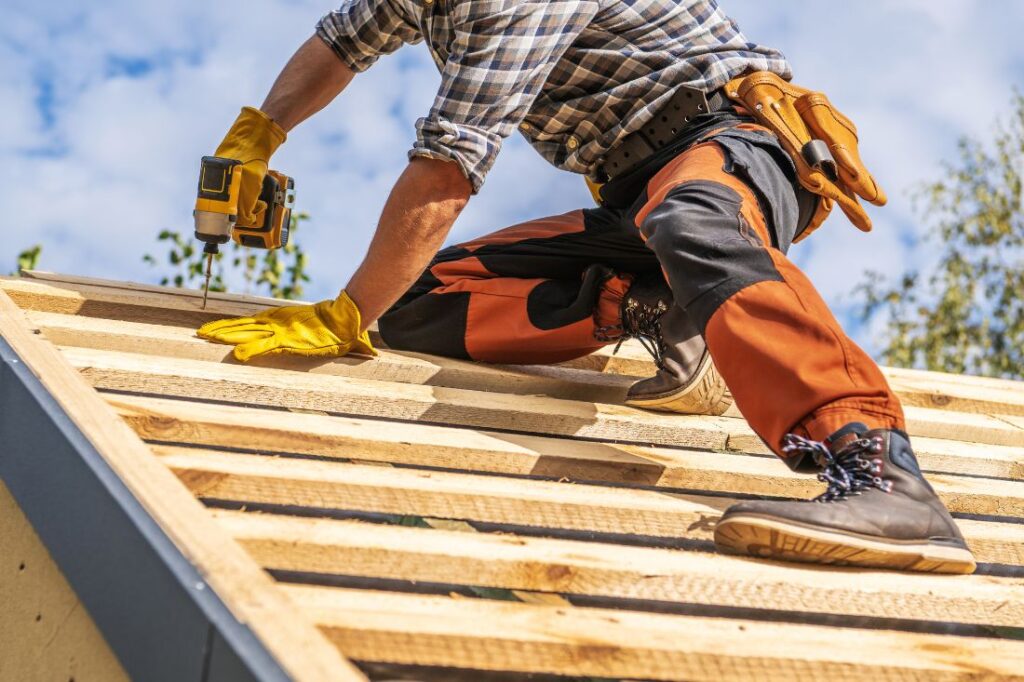Building Payment Stages: Ultimate Guide to Construction Loans – Kaleido Loans
What is a construction loan?
A construction loan is a home loan product to assist with construction of a property or to complete major structural renovations. This could range from building a house from the ground up or building a granny flat or even structural renovations to your property.
How the loan is funded
Unlike a normal home loan, the bank will provide you with the money from your construction loan in building stages via progress payments. This is because when you are building a property, you don’t pay the builder the entire cost of the construction. Instead, you will make progress payments based on each stage of the construction that is completed.
For example, if you are approved for a $500,000 construction loan, each time the builder sends you an invoice for payment of $75,000 after a stage is completed, the bank will pay the builder directly by using the funds from your approved home loan of $500,000.
After the bank makes a payment, the balance of your home loan will increase accordingly to how much has been paid by the bank. In the above example, if this was your first payment, then you will owe $75,000 to the bank. As the bank continues to make payments for each stage, the amount you owe will increase and eventually it will be $500,000 owing at the completion of your property.
Use your money first
The banks require that you pay the builder for your portion of the construction cost first before the bank will start funding the remaining progress payments.
This means, if your building contract is $600,000 and you are borrowing 80% from the bank ($480,000), then you are required to pay the builder the 20% first, which will be $120,000.
You will need to provide receipts from the builder as evidence you have made these payments, before the bank will start funding the next payments.
This process is to ensure that you do not run out of money for the build.
Repayment of the loan
During the construction stage, your home loan repayments will be interest only. This means, you only need to pay the interest each month of your loan and not required to pay principal. However, you can certailny pay more than just the interest if you choose to.
Normally interest only loans have a higher rate than loans with principal and interest (P&I) repayments, but in most cases, the bank will not charge you the higher interest only rate when you take out a construction loan.
At the end of your construction and the total loan amount has been funded and paid to the builder, your loan repayment will automatically change from interest only to P&I.
Valuation
Valuations are required for construction loans just the same as when you are buying an established property. The valuation will be done as an ‘as if completed’ valuation, which means the valuer will need copies of the building plans and specifications along with a list of all inclusions of the property so they can determine what the completed property will be worth.
This valuation amount will be used to calculated your Loan to Value Ratio (LVR) for your loan application and determine the interest rate of your loan.
In the valuation report, the valuer will determine the value of the vacant land and set a value for the building. The combination of these two values will make up the total value of the property and then comparisons will be made to similar properties in the suburb to determine the market value of the property for lending purposes.
One thing to be aware of is that cost does not always equal value. For example, if your land is valued at $500,000 and you are spending $500,000 to build a house on it, it doesn’t automatically mean your property will achieve a valuation of $1,000,000.
The valuer will compare the cost of the build based on industry averages and sometimes you might find that the total value may be less than the value of the land plus the cost of the build so make sure you don’t make the mistake of assuming that a valuation is just simple addition.
A building surveyor plays a crucial role in overseeing the valuation process, ensuring compliance with legal requirements and industry standards.
In addition to this, the bank will require additional valuations to be completed usually at the beginning of the construction and at the end of construction before they make their final payment to the builder.
Progress payment schedule
Each building contract will have a progress payment schedule which details the numerous stages of the build and how much the builder will charge you for completing each stage.
Different builders will have different progress payment schedules but there are industry standards that most builders subscribe to when setting this.
Here is an example of an industry standard progress payment schedule when building a home.
Slab – this stage involves completing the foundation of your property and usually requires 20% of the building cost to be paid at completion. This 20% should include your 5% deposit already paid before construction started.
Frame – this stage, also known as the frame stage, involves completing the external frames of the home. This stage usually requires up to 20% of the building cost to be paid at completion.
Lock Up – this stage, referred to as the lock up stage, involves the completion of windows, doors, roof, etc., which enables the home to be locked up and secured. This stage usually requires up to 20% of the total building cost.
Fit Out – this stage, also known as the fixing stage, involves the installation of internal fixtures, electricals, plumbing, etc. This stage usually requires 30% of the total building cost.
Completion – this stage involves the final touches and works that need to be completed before the property can be handed over to you by the builder. This stage usually requires 10% of the total building cost.
If you are presented with a progress payment schedule that requires more than 50% of the total cost to be paid in the first 2 stages of the construction, you need to be aware and take caution as this could mean the builder is relying on your money to support their projects and could mean a sign that the builder is not as reliable and financially secure in managing their cashflow.
Out of contract items
These are things that are not included in your building contract. Items such as fencing, blinds, landscaping and driveways are not usually included in a building contract. Therefore, you’ll need to obtain quotes yourself from individual contractors and consider these costs when looking at your building budget. Domestic building contracts play a crucial role in defining what is included and excluded in the contract.
You also need to ensure these quotes are provided to your mortgage broker so they can pass it onto the valuer to be included in the overall valuation of your property.
Variations
When the builder makes changes to the price of your building contract, this is known as a variation. This could be a price increase or a price reduction due to your selection of certain inclusions and fixtures.
Every variation that is made to the building contract will need to be signed by the builder and customer. You’ll also need to provide this variation to your mortgage broker so they can pass it onto the bank to update their calculations. A building surveyor will oversee these variations to ensure compliance with legal requirements during construction.
Sometimes, as a result of a variation increasing the building contract price, your contributions towards the building cost may be increased if the loan amount is not increased by the same amount.
Handover and Final Progress Payment
When your construction is completed, the builder send their final invoice to you for you to pass onto your mortgage broker so they can send it to the bank to process the payment.
Before the final payment is made, a building inspector will need to approve the final stage of construction to ensure everything is up to standard.
As this is the final payment, the bank will require some additional documents such as:
Certificate of currency of insurance – this is evidence that the property has adequate building insurance
Occupation certificate – this is evidence that the property is safe to be occupied
Please ensure you are aware who will be responsible in arranging the occupation certificate as some builders will include this in the building contract and provide it while others will not and you will need to arrange this as the owner of the property.
Finding this out in the beginning will prevent any delays to receiving the keys to your new home.
Construction Loan Options
When embarking on the journey of building a new home, many homeowners turn to construction loans to finance their projects. These specialized loans are designed to provide the necessary funds for building a home from the ground up. There are several construction loan options available, each catering to different needs and circumstances:
-
Construction-only loans: These loans provide the funds needed to build a home but do not include a long-term mortgage. Once the construction is complete, you will need to secure a separate mortgage to pay off the construction loan.
-
Construction-to-permanent loans: These loans offer a seamless transition from construction to permanent financing. Initially, they provide the funds needed to build the home, and once construction is complete, the loan converts into a permanent mortgage.
-
Owner-builder construction loans: Designed for those who plan to act as their own general contractor, these loans allow homeowners to manage the construction process themselves. This option can be more complex and may require additional qualifications.
It’s essential to research and compare different construction loan options to find the one that best suits your needs and budget. Understanding the nuances of each type can help you make an informed decision and ensure a smooth construction process.
Construction Loan Approval Process
Securing a construction loan involves a series of steps that ensure both you and the lender are prepared for the financial commitment. Here’s a breakdown of the typical construction loan approval process:
-
Pre-approval: The initial step where the lender reviews your creditworthiness and provides a pre-approval letter stating the amount they are willing to lend. This gives you a clear idea of your budget.
-
Loan application: Once you’ve chosen a lender and a suitable construction loan option, you’ll need to submit a formal loan application. This involves providing detailed financial documentation, such as income statements and credit reports.
-
Appraisal: The lender will order an appraisal of the property to determine its value. This step ensures that the loan amount is sufficient to cover the construction costs and that the property will hold its value.
-
Loan approval: After the appraisal, the lender will review all the information and make a final decision on whether to approve the loan. This step may involve additional documentation or clarifications.
-
Loan closing: If approved, the lender will prepare the loan documents. You will then sign these documents to finalize the loan, officially securing the funds needed for your construction project.
Working with a reputable lender and carefully reviewing the loan terms and conditions before signing is crucial. This diligence can help prevent any surprises and ensure that the loan meets your needs.
Construction Loan Risks and Considerations
While construction loans can be an excellent way to finance your dream home, they come with certain risks and considerations that you should be aware of:
-
Interest rate risk: Many construction loans have variable interest rates, which can fluctuate over time. This means your payments could increase if interest rates rise.
-
Payment risk: During the construction phase, loans typically require interest-only payments. This can increase the risk of default if you’re not prepared for these payments.
-
Completion risk: There’s always a risk that the construction project may not be completed on time or within budget. Delays or cost overruns can impact your ability to repay the loan.
-
Market risk: The housing market can be unpredictable. A decline in the market value of your property can affect your loan repayment and overall financial stability.
To mitigate these risks, it’s essential to work with a reputable lender and a qualified builder. Ensuring that you have a solid plan and budget in place can help you navigate these challenges and achieve a successful construction project.
Benefits of Structured Payment Schedules
A well-structured payment schedule can be a game-changer for homeowners undertaking a construction project. Here are some of the key benefits:
-
Improved cash flow management: A structured payment schedule helps you manage your cash flow effectively, ensuring that you have the necessary funds available at each stage of the construction.
-
Reduced risk of default: By providing a clear payment plan, a structured schedule reduces the risk of default. It ensures that payments are made on time, keeping the project on track.
-
Increased transparency: A detailed payment schedule increases transparency and accountability. All parties involved are aware of the payment terms and conditions, which helps prevent misunderstandings.
-
Better budgeting: With a structured payment schedule, you can budget more accurately for the construction project. This ensures that you have sufficient funds to complete the project without financial strain.
To establish a structured payment schedule that meets your needs and budget, it’s essential to work with a reputable builder and a qualified solicitor and construction lawyer. Their expertise can help you navigate the complexities of the payment schedule and ensure that your contractual and legal rights are protected.




